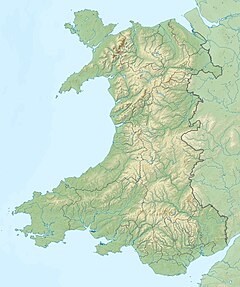This article relies largely or entirely on a single source .(January 2024) |
| Afon Llyfni | |
|---|---|
 Afon Llyfni at the outflow of Llyn Nantlle Uchaf | |
| Location | |
| Country | Wales |
| Region | North Wales |
| County | Gwynedd |
| Physical characteristics | |
| Source | Llyn Nantlle Uchaf |
| Mouth | Irish Sea |
• location | Pontllyfni |
• coordinates | 53°02′58″N4°20′19″W / 53.04952°N 4.33874°W |
The Afon Llyfni is a small river in North Wales which arises as Nant Drws y Coed between Mynydd Mawr and Mynydd Drws-y-Coed just to the west of Snowdon.
The main river forms at the outlet of the Llyn Nantlle Uchaf and flows past the great slate workings of Nantlle picking up drainage from the very deep flooded quarries.
It then passes to the south of Talysarn and Penygroes before eventually discharging to the sea at Pontllyfni.
For a number of years there were concerns that the quality of the river might be polluted because of illegal and historical dumping of industrial waste in one of the deep, water-filled quarries. [1] However, it appears that there has been little or no detectable quality shift.

